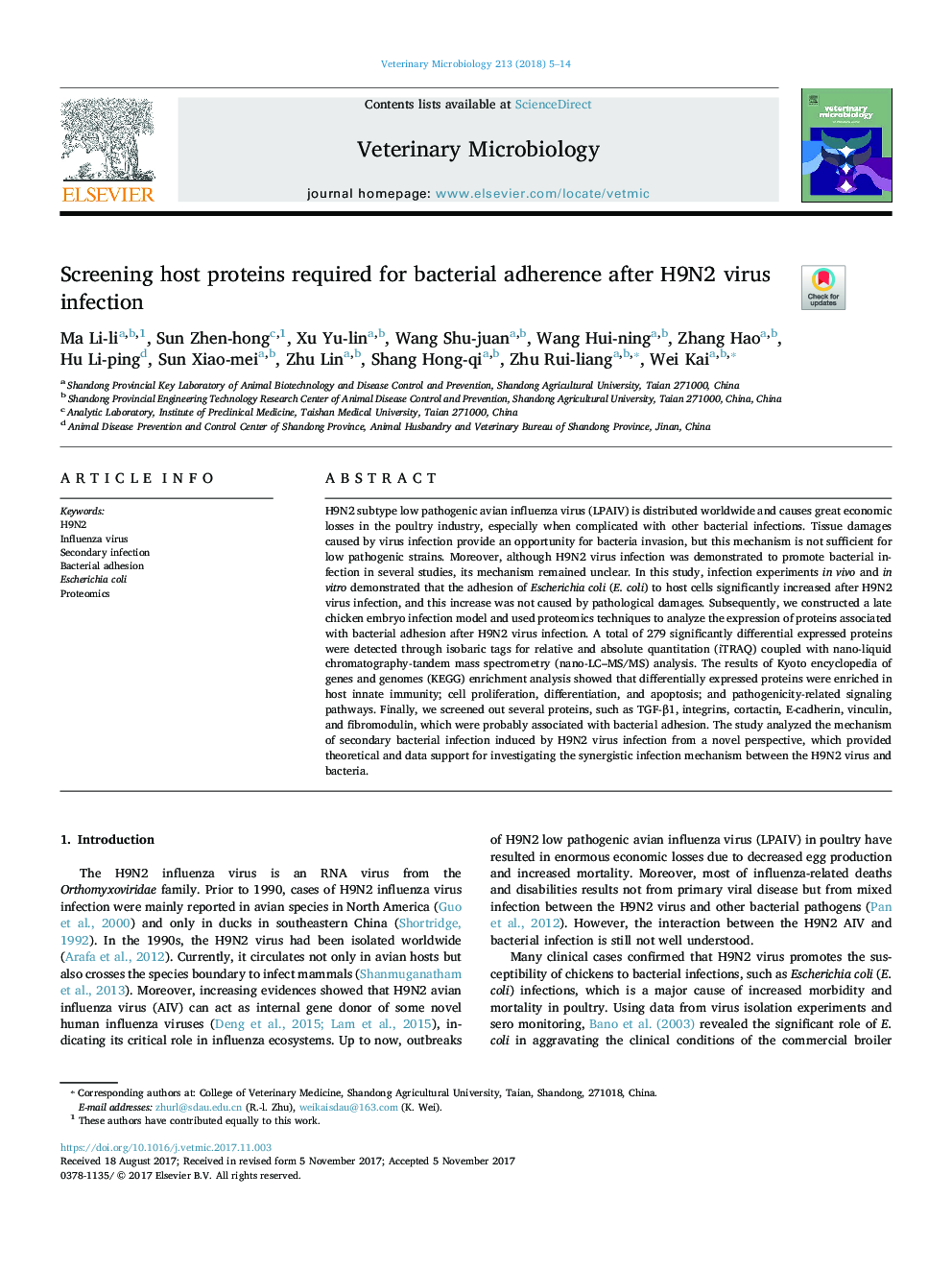| Article ID | Journal | Published Year | Pages | File Type |
|---|---|---|---|---|
| 8505643 | Veterinary Microbiology | 2018 | 10 Pages |
Abstract
H9N2 subtype low pathogenic avian influenza virus (LPAIV) is distributed worldwide and causes great economic losses in the poultry industry, especially when complicated with other bacterial infections. Tissue damages caused by virus infection provide an opportunity for bacteria invasion, but this mechanism is not sufficient for low pathogenic strains. Moreover, although H9N2 virus infection was demonstrated to promote bacterial infection in several studies, its mechanism remained unclear. In this study, infection experiments in vivo and in vitro demonstrated that the adhesion of Escherichia coli (E. coli) to host cells significantly increased after H9N2 virus infection, and this increase was not caused by pathological damages. Subsequently, we constructed a late chicken embryo infection model and used proteomics techniques to analyze the expression of proteins associated with bacterial adhesion after H9N2 virus infection. A total of 279 significantly differential expressed proteins were detected through isobaric tags for relative and absolute quantitation (iTRAQ) coupled with nano-liquid chromatography-tandem mass spectrometry (nano-LC-MS/MS) analysis. The results of Kyoto encyclopedia of genes and genomes (KEGG) enrichment analysis showed that differentially expressed proteins were enriched in host innate immunity; cell proliferation, differentiation, and apoptosis; and pathogenicity-related signaling pathways. Finally, we screened out several proteins, such as TGF-β1, integrins, cortactin, E-cadherin, vinculin, and fibromodulin, which were probably associated with bacterial adhesion. The study analyzed the mechanism of secondary bacterial infection induced by H9N2 virus infection from a novel perspective, which provided theoretical and data support for investigating the synergistic infection mechanism between the H9N2 virus and bacteria.
Related Topics
Life Sciences
Agricultural and Biological Sciences
Animal Science and Zoology
Authors
Ma Li-li, Sun Zhen-hong, Xu Yu-lin, Wang Shu-juan, Wang Hui-ning, Zhang Hao, Hu Li-ping, Sun Xiao-mei, Zhu Lin, Shang Hong-qi, Zhu Rui-liang, Wei Kai,
